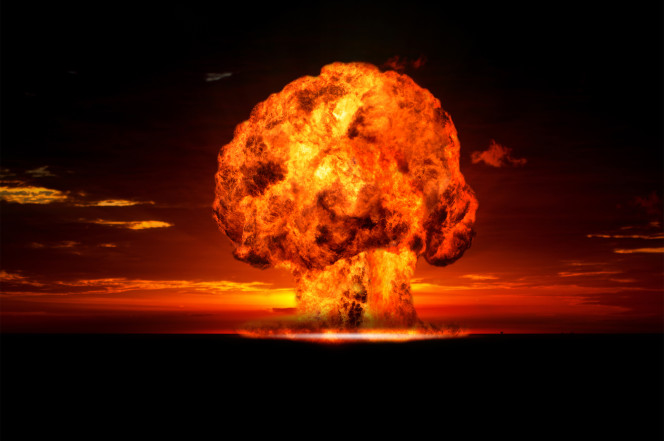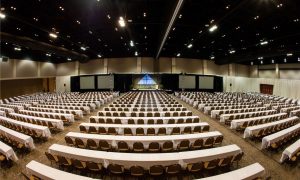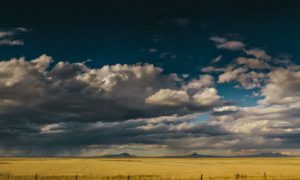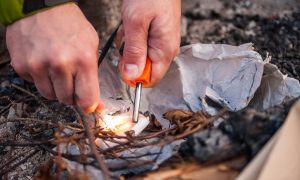It’s the end of the world as they know it — and the doomsday preparation industry is doing fine.
“Doomsday preppers” — a subculture of people who prepare for the apocalypse — are spending more money in recent weeks, thanks to fear of a nuclear war. Threats traded between President Trump and North Korea have them particularly worried.
“[Kim Jong Un] has managed to spike our business unbelievably,” said Keith Hillen, the owner of Prep and Save — a doomsday equipment store that operates three locations in California. “We’ve had the largest days we’ve ever had. Our business [has seen] between a 200 percent and 400 percent increase.”
Preppers see threats of nuclear war as a reason to stock up on products like 72-hour survival kits, food and water and weaponry — such as this $24.99 throwing axe.
At the moment, Hillen’s best sellers are gas masks ($40,) iodine pills ($15.99,) and Geiger counters to measure radioactivity in an area ($200 and up.)
Hillen says “upper class” consumers — “doctors, lawyers, architects” — make up much of his customer base, adding that “the other big group is military…because they know what’s going on out there.” Sales are up “every time there is a fire, flood, earthquake, or any type of terrorist or nuclear attack.”
Preppers shell out impressive cash in the name of survival. One prepper, Bob McDevitt of Reno, Nevada, told Moneyish that he’s spent between $150,000 and $200,000 stocking up on supplies, including two years’ worth of medical equipment, food and water. He now lives full-time in an RV.
For McDevitt, prepping is far more about practicality than panic. “Preparedness gives us a fall-back and peace of mind, similar to having a smoke alarm in your house when you go to bed,” he said, adding that, “We don’t believe in doomsday. No one I know does.”
Doomsday preppers aren’t as rare as you might imagine. “Estimates [say that] between 20 to 35 percent of Americans think that we can have either a nuclear war or something religious will happen that will mean the end of the world,” said Dr. Matthew Lorber, a clinical psychiatrist at Lenox Hill Hospital in New York.
“[Preppers] develop a sense of community and support each other,” Lorber added. “There’s a feeling of safety and companionship when you get groups of these people who start talking about this and they check with each other to make sure they’re not forgetting materials.”
But in extreme cases, over-prepping can become mentally crippling. “There are some [preppers] who wind up barricading themselves in their homes or building bunkers,” Lorber said.
One of the most recent instances of doomsday hysteria happened on December 21st, 2012, when millions of people around the world braced themselves for an anticipated apocalypse that never came. At the time, people like Patrick Geryl went all-out: After investing $130,000 in survival products, Geryl told CNN he worried how he would afford an additional $100,000. He’d need the extra cash, he said, to buy a special boat to help him sail to South Africa — in order to avoid a potential outbreak of radiation.
Click here to view original web page at nypost.com

















